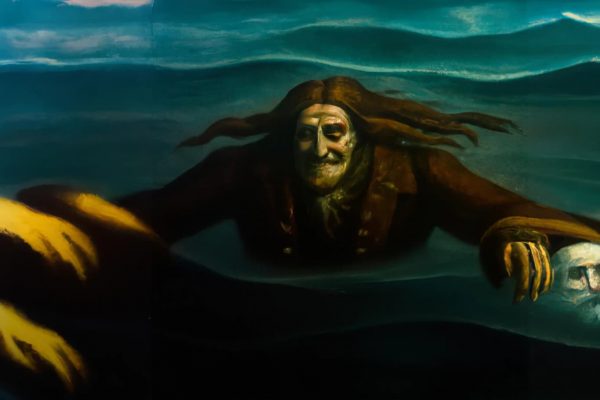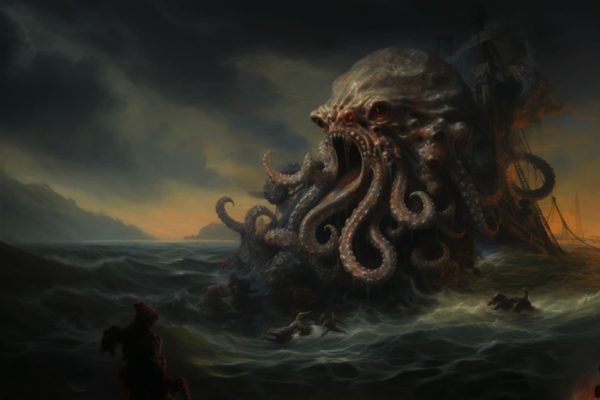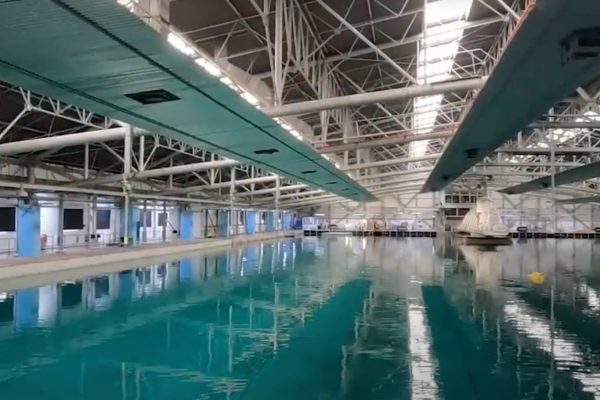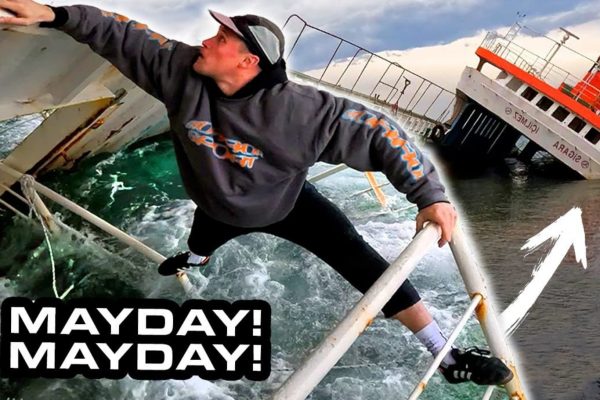Ah, the hovercraft. What a magnificent machine! It is difficult to imagine now, but for a time in the 1960s and 1970s, the hovercraft was the future of transportation. The hovercraft ferry was particularly exciting, offering a thrilling and speedy way to cross the Channel, and even to travel up rivers.
The hovercraft ferry was invented by Sir Christopher Cockerell, a brilliant engineer who had worked for Marconi and the British government during World War II. Cockerell’s breakthrough was to realize that a cushion of air beneath a vehicle could reduce friction and make it possible to travel at high speeds over water or land. He patented his invention in 1956, and the hovercraft was born.
The First Commercial Use In The UK
The first commercial hovercraft service began operating in 1962, when Hovertravel launched a passenger service between Portsmouth and the Isle of Wight. It was an instant hit, with its high speeds and distinctive roar making it a popular attraction for tourists and locals alike. Soon, other hovercraft operators began to appear, and the technology seemed set to revolutionize the way we travel.
Hovercraft Ferry
The hovercraft ferry was particularly exciting. It was a sleek, futuristic machine that seemed to defy the laws of physics. Passengers would board the craft and strap themselves in, while the crew fired up the engines and the fans began to whir. With a sudden lurch, the hovercraft would rise up on its cushion of air and skim across the water, bouncing and juddering like a bucking bronco. It was exhilarating, and many people loved the thrill of the ride.
The hovercraft ferry also had practical advantages. It could travel over mudflats and shallow water, and did not need a harbor or pier to operate. It could carry passengers and vehicles, and could travel at high speeds, cutting journey times significantly. For example, a hovercraft could cross the Channel from Dover to Calais in just 35 minutes, compared to 90 minutes on a conventional ferry.
The Golden Age of The Hovercraft
In the 1970s, the hovercraft ferry enjoyed a golden age. New routes were added, and larger, more powerful craft were built. The SR-N4, the world’s largest hovercraft, could carry up to 418 passengers and 60 cars, and was used on the cross-Channel route between Dover and Calais. It was an impressive machine, over 60 meters long and 19 meters wide, with four Rolls-Royce gas turbines producing 24,000 horsepower. It was a true engineering marvel, and a testament to the ingenuity of its designers and builders.
However, despite the excitement and the promise, the hovercraft ferry was not to last. In the 1980s, hovercraft began to fall out of favour, and many services were discontinued.
Nostalgia and a Scar
I grew up near Pegwell Bay in Kent, where I would often spend hours gazing out at the sea, watching the hovercraft ferry skim across the channel at incredible speed. It was an amazing sight to behold, and I was filled with excitement and wonder about the future. I felt like I was witnessing something truly revolutionary, and I was proud that this incredible machine was being developed and tested so close to home.
As I grew older, I became increasingly aware of the scar left by the hoverport’s abandonment. The site that once buzzed with activity and promise now lay abandoned, a large patch of disused concrete being slowly eroded by the sea. The place that could have been a beautiful beach was instead a blight on the estuary of the River Stour. It was a sad reminder of the failure of the hovercraft ferry and the costs of its decline. I couldn’t help but feel a sense of regret and loss when I looked out at the patch of concrete, imagining what could have been if the hoverport had thrived and continued to develop.
Why The Hovercraft Left Us
Cost
Firstly, operating costs were high. The hovercraft was an expensive machine to build, maintain and run. The engines required frequent servicing, and the craft itself required regular cleaning and upkeep. The cost of fuel was also a significant factor, as hovercraft were notorious for their thirst for diesel. In addition, the hovercraft was a noisy and bumpy ride, which could deter some passengers.
Poor Reliability
Secondly, the hovercraft was not always reliable. It was affected by weather conditions, particularly high winds, and could be delayed or canceled if conditions were unfavorable. In addition, the craft could be damaged by debris in the water, or by the uneven terrain of mudflats or riverbeds.
High-Speed Alternatives
Thirdly, the rise of other modes of transport contributed to the decline of the hovercraft ferry. High-speed trains, low-cost airlines, and improved ferry services all offered faster, more comfortableand more convenient options for travelers, and the hovercraft was unable to compete on cost or speed.
Environmental Impact
Finally, environmental concerns played a role in the decline of the hovercraft ferry. The craft’s noise and significant wake caused disturbances to coastal wildlife, and the high fuel consumption made it a less environmentally friendly option than other modes of transport. This, combined with changing public attitudes towards environmental issues, made the hovercraft less popular among passengers.
The Final Hoverports Standing
Despite these challenges, some hovercraft services continued to operate into the 1990s and 2000s. However, the number of routes and operators continued to decline, and by the 2010s, the hovercraft was largely a thing of the past.
So, what can we learn from the rise and fall of the hovercraft ferry? Well, firstly, it is clear that the hovercraft was an innovative and exciting technology that captured the public’s imagination. It was a bold experiment in engineering and design, and demonstrated what could be achieved with imagination and creativity.
However, the story of the hovercraft ferry also shows us the importance of practicality and reliability. While the hovercraft was an exciting and thrilling mode of transport, it was not always the most practical or reliable. In the end, it was overtaken by other, more efficient and dependable options.
Nonetheless, the hovercraft ferry will always have a special place in the history of transportation. It was a bold and daring experiment, a vision of a future that might have been. While it may no longer be with us, it remains a testament to the ingenuity and creativity of its designers, builders and operators.
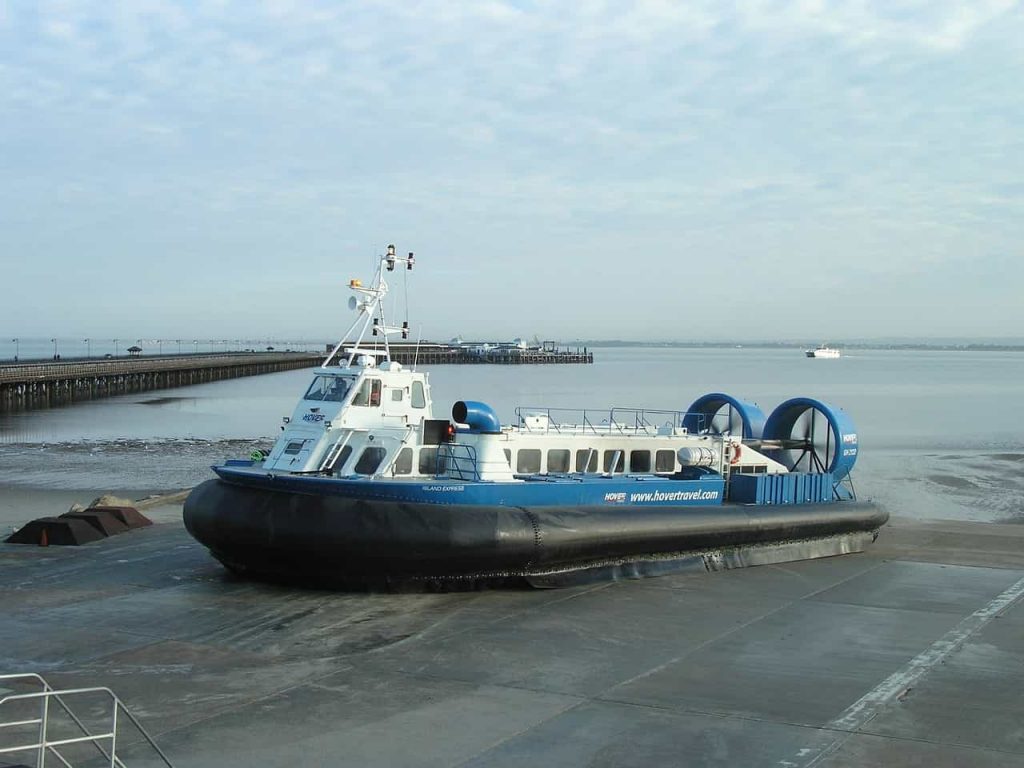
A Blaze of Glory
The rise and fall of the hovercraft ferry is a fascinating story of innovation, excitement, and practical challenges. While the hovercraft was not to last, its legacy lives on, inspiring us to push the boundaries of what is possible and to continue to experiment with new and exciting technologies. Who knows what the future holds? Perhaps one day, the hovercraft will make a comeback, and once again take to the seas and rivers in a blaze of glory.

